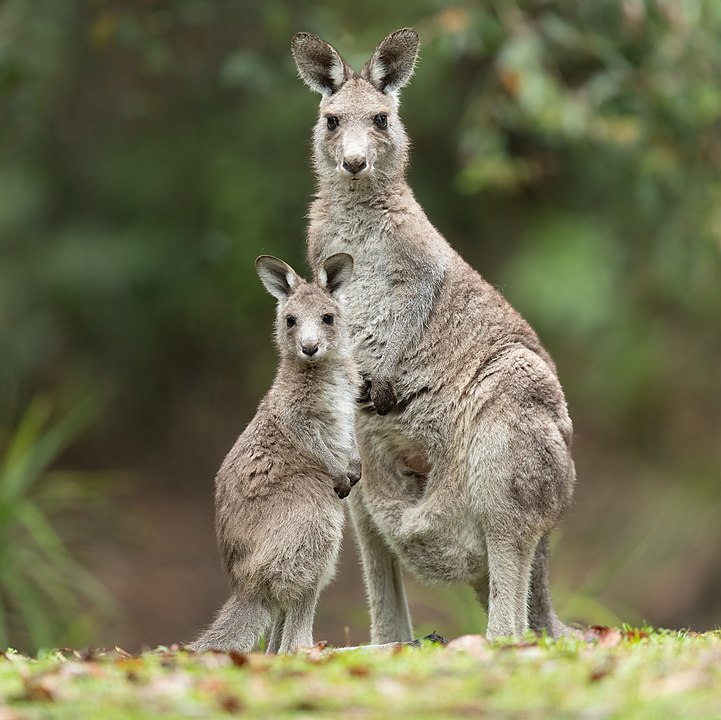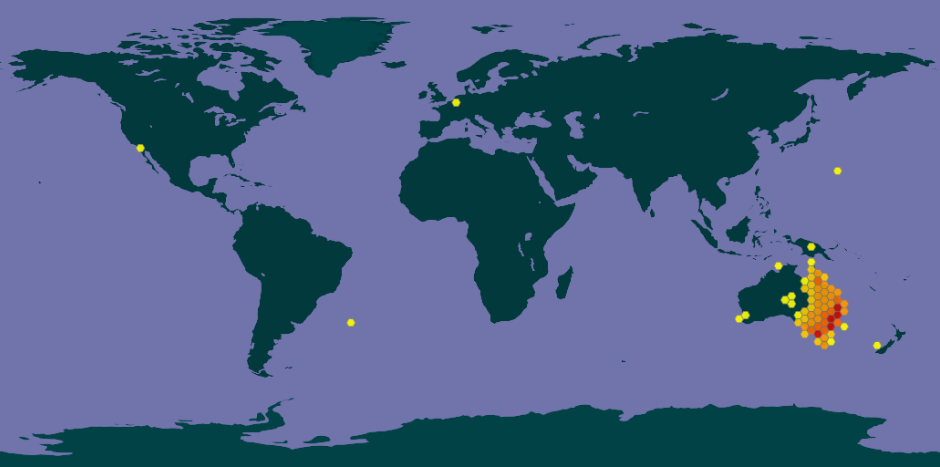Macropus giganteus Shaw, 1790
Eastern grey kangaroo

| Kingdom | Animalia |
| Phylum | Chordata |
| Class | Mammalia |
| Order | Diprotodontia |
| Family | Macropodidae |
| Genus | Macropus |
| Species | Macropus giganteus Shaw, 1790 |
Listen to the SONIFIED SPECIES

Known records of this species

Taxon Description
The eastern grey kangaroo (Macropus giganteus) is a marsupial found in the eastern third of Australia, with a population of several million. It is also known as the great grey kangaroo and the forester kangaroo. Although a big eastern grey male can typically weigh up to 66 kg (146 lb) and have a length of well over 2 m (6 ft 7 in), the scientific name, Macropus giganteus (gigantic large-foot), is misleading: the red kangaroo of the semi-arid inland is larger, weighing up to 90 kg (200 lb).
Description
The eastern grey kangaroo is the second largest and heaviest living marsupial and native land mammal in Australia. An adult male will commonly weigh around 50 to 66 kg (110 to 146 lb) whereas females commonly weigh around 17 to 40 kg (37 to 88 lb). They have a powerful tail that is over 1 m (3 ft 3 in) long in adult males. Large males of this species are more heavily built and muscled than the lankier red kangaroo and can occasionally exceed normal dimensions. One of these, shot in eastern Tasmania weighed 82 kg (181 lb), with a 2.64 m (8 ft 8 in) total length from nose to tail (possibly along the curves). The largest known specimen, examined by Lydekker, had a weight of 91 kg (201 lb) and measured 2.92 m (9 ft 7 in) along the curves. When the skin of this specimen was measured it had a “flat” length of 2.49 m (8 ft 2 in).
Distribution and habitat
Although the red is better known, the eastern grey is the kangaroo most often encountered in Australia, due to its adaptability. Few Australians visit the arid interior of the continent, while many live in and around the major cities of the southern and eastern coast, from where it is usually only a short drive to the remaining pockets of near-city bushland where kangaroos can be found without much difficulty. The eastern grey prefers open grassland with areas of bush for daytime shelter and mainly inhabits the wetter parts of Australia. It also inhabits coastal areas, woodlands, sub-tropical forests, mountain forests, and inland scrubs.